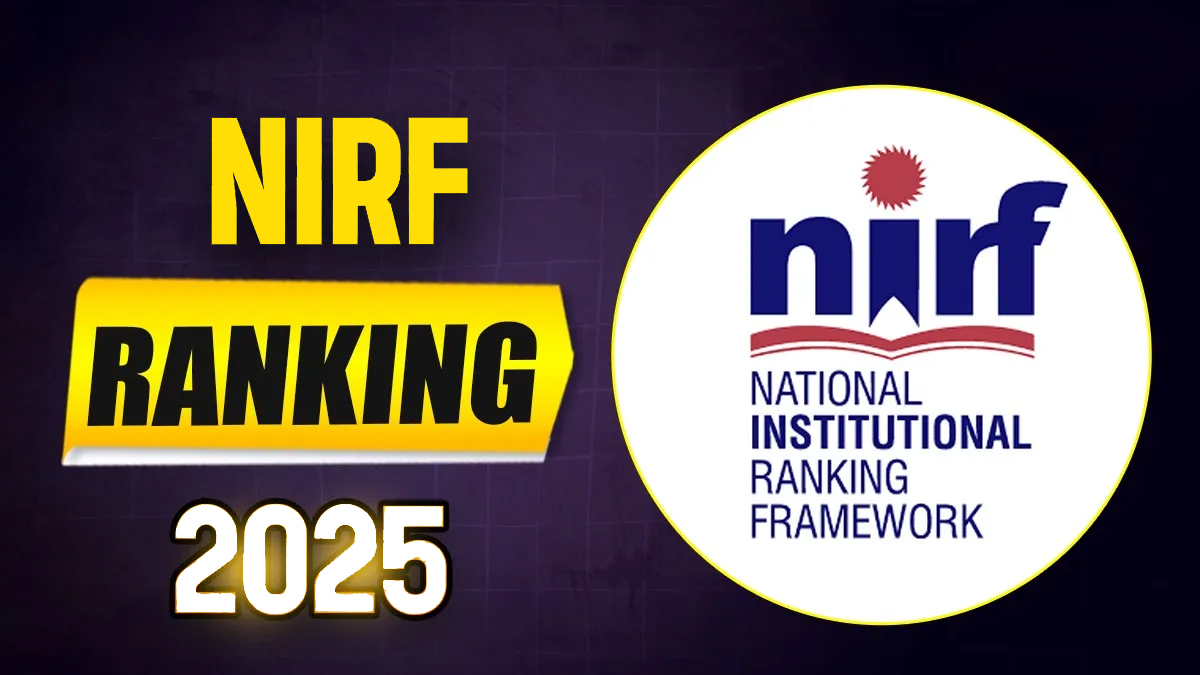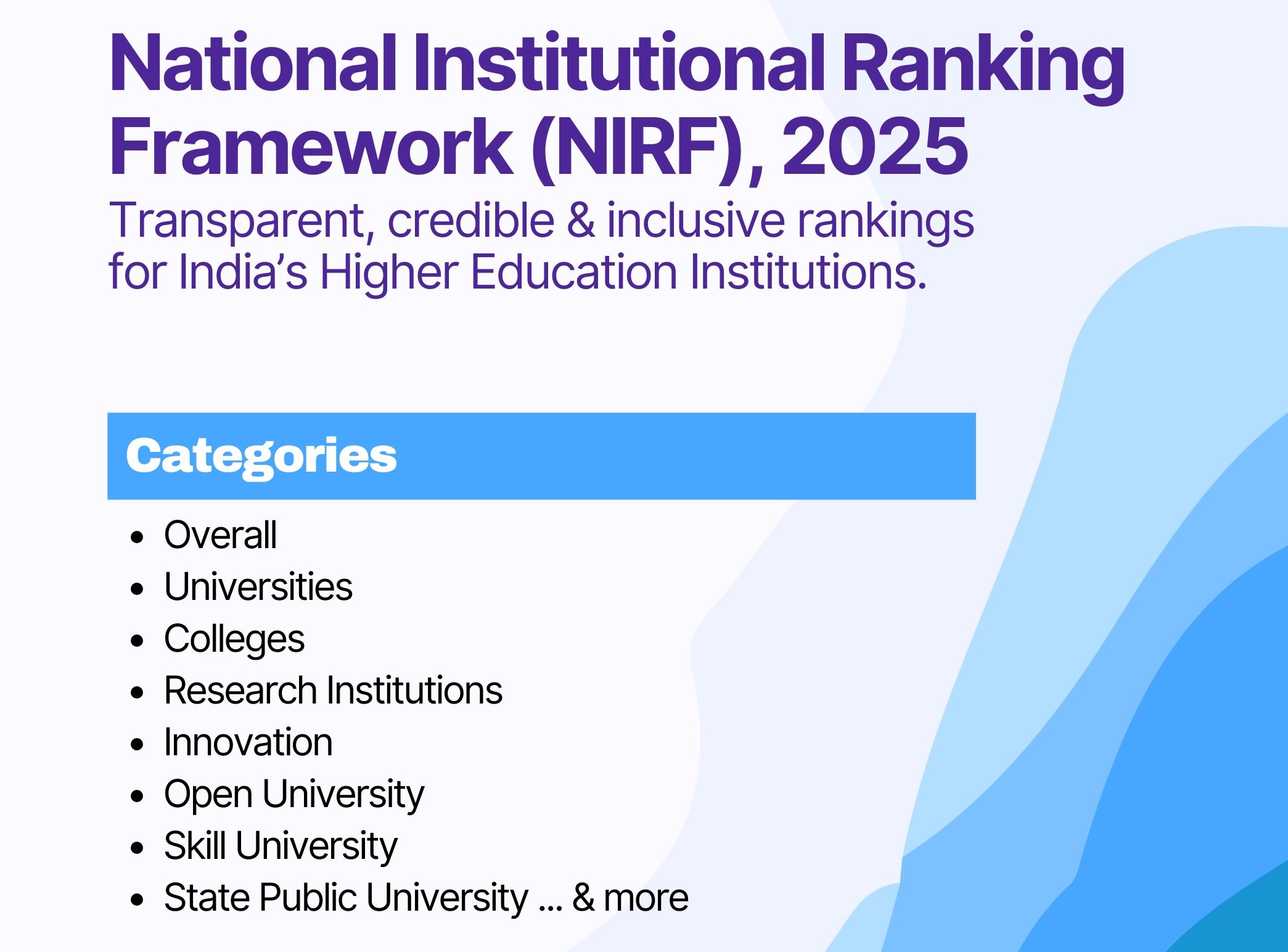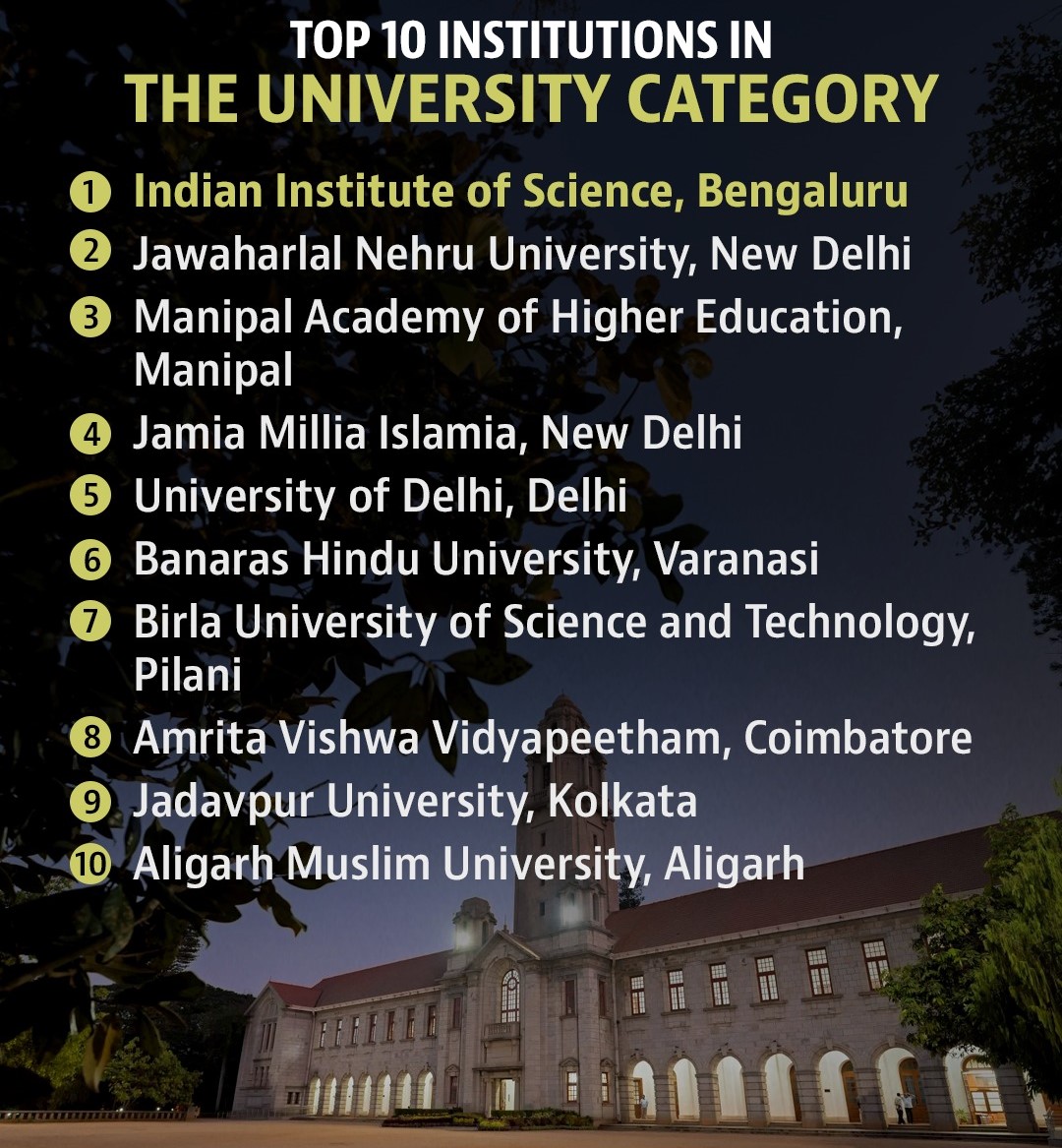Education is the cornerstone of any nation’s progress and intellectual prosperity. India, which is home to the world’s largest youth population today, is not only nurturing talent through its higher education system but is also strengthening its position in the global competition. Against this backdrop, the National Institutional Ranking Framework (NIRF), launched by the Ministry of Education in 2015 and implemented since 2016, has become the most reliable tool for evaluating and comparing higher education institutions.
-
-
-
When the tenth edition of NIRF was released recently in 2025, it became not just a ranking list but a symbol of the strengths, weaknesses and future direction of Indian higher education. This year’s rankings cover 17 categories such as engineering, management, medicine, law, research institutes, etc. Notably, a new category based on Sustainable Development Goals (SDGs) has been added in 2025, reflecting the growing importance of education in sustainable development and societal contribution.
-
-
Why is National Institutional Ranking Framework (NIRF) important?
The Indian higher education system is one of the largest systems in the world. It includes more than 1000 universities, more than 40,000 colleges and lakhs of students. Evaluating quality in such a wide network is a difficult task. In such a situation, NIRF not only presents transparent criteria, but also helps students, parents and policy makers to take informed decisions.
It has five major evaluation parameters:
· Teaching, Learning and Resources (TLR) – infrastructure, teacher-student ratio and quality of curriculum.
· Research and Professional Practice (RPC) – research publications, patents and industry collaboration.
· Graduate Outcome (GO) – placement, progress in higher education and success in competitive examinations.
· Connectivity and Inclusivity (OI) – social and regional diversity, gender balance and the tendency to take everyone along.
· Image (Perception) – reputation and credibility of the institution in the academic world and industry.
The addition of SDG parameters in 2025 to these parameters is noteworthy as it does not limit the institutions to academic excellence but also measures their responsibility towards society and the environment.
New initiatives in the 2025 rankings:
This year, NIRF has made logical and far-sighted changes—
· 7,692 institutions were included in 17 categories, which is the highest ever.
· For the first time, the Sustainable Development Goals (SDG) category has been added, making the global objectives of 'green campus', socio-cultural responsibility and sustainable education a part of the ranking.
· In line with the National Education Policy (NEP) 2020, concepts like 'Indian knowledge system', 'regional language' and 'flexible educational system' have also found a place in the index.
SDGs: New direction of education:
In 2025, NIRF took a revolutionary step and included the SDG based assessment category. Its importance is twofold:
· Educational responsibility: Universities and colleges are not just degree-granting units, but also institutions that improve society. By working on the SDGs, they can make a concrete contribution to issues such as climate change, poverty eradication, gender equality and quality education.
· Global competitiveness: Today, major ranking frameworks around the world (such as QS and THE) are also making Sustainable Development Goals an important criterion. India's NIRF is further strengthening its credibility by keeping pace with this trend.
This will also inspire students and researchers to actively participate in society-oriented research and projects, rather than being just career-oriented.
Wider implications:
· For students: Rankings help them choose institutes. For example, if someone wants to study engineering, they may look at IIT Madras, IIT Delhi or IIT Bombay. On the other hand, medical aspirants will prefer institutes like AIIMS Delhi or KGMU.
· For parents: NIRF gives them assurance that the institute their child is studying in meets the standards of education quality.
· For institutes: Rankings are also a form of competition. Every institute wants to move up the list, so it constantly strives to improve infrastructure, research and inclusiveness.
· For policymakers: These rankings tell them which areas need investment and improvement. For example, if private universities are growing faster in a category, it means that government universities need additional support.
Challenges:
Although NIRF is an important step, it is not free from challenges.
· Ranking vs. Reality: Many times institutions manipulate data to improve rankings.
· Lack of level playing field: Institutions in metros are more resource-rich than universities in rural and small towns.
· Limited scope of parameters: Despite adding SDGs, many human and social aspects are still not given enough importance.
· More emphasis on perception: The image of an institution can sometimes be different from actual performance.
To overcome these challenges, NIRF needs to constantly improve its assessment mechanism and increase transparency.
Way forward:
1. Strengthening research and innovation: Indian universities need to become world-class research centres, not just limited to teaching. For this, industry-academia partnerships and financial investment are necessary.
2. Mainstream Sustainable Development Goals: Contributions to Sustainable Development Goals should be measured by concrete actions—such as green campuses, rural development projects, gender inclusion—rather than tokenism.
3. Reduce regional imbalances: State universities and institutions in rural areas should be given special grants and administrative support.
4. Ensure transparency: Independent audit systems should be in place for data collection and evaluation to ensure no data manipulation.
5. Encourage international collaboration: Indian institutions should partner with foreign universities to ensure that their research and curriculum are at par with international standards.
Conclusion:
NIRF Rankings 2025 has proved that Indian higher education is no longer limited to the country but is moving towards global standards. IIT Madras’s continued top position shows that world-class recognition is possible if institutions focus on excellence, research, and social responsibility.
| UPSC/UPPCS Main Questions: How can research, innovation and international collaboration be strengthened to make Indian higher education globally competitive? |









